Çelik sac paneller inşaat, endüstriyel ve mimari uygulamalarda hayati önem taşıyan malzemelerdir. İster dayanıklı bir çatı inşa ediyor, ister uzun ömürlü bir dış cephe oluşturuyor, hatta endüstriyel makinelerin montajını yapıyor olun, çelik sac paneller benzersiz bir güç, çok yönlülük ve uzun ömürlülük sunar. Bu kapsamlı kılavuzda, çelik sac paneller hakkında türlerinden üretim süreçlerine, temel bileşenlerden kullanım alanlarına ve hatta en iyi tedarikçilerin nasıl seçileceğine kadar bilinmesi gereken her şeyi keşfedeceğiz. Her yönüyle net bir anlayışa sahip olmanızı sağlamaya odaklanan bu kılavuz, konuşkan ve ilgi çekici kalırken ayrıntılara derinlemesine dalacaktır.
Çelik Sac Panellere Genel Bakış
Çelik sac paneller, mukavemetleri, korozyon dirençleri ve şekillendirilebilirlikleri nedeniyle çeşitli uygulamalarda kullanılan, farklı çelik türlerinden yapılmış düz veya oluklu saclardır. Kullanım amaçlarına bağlı olarak galvanizli, boyalı ve düz çelik saclar dahil olmak üzere farklı kalınlıklarda ve yüzeylerde gelirler. Çelik sac paneller, oluklu demir saclar, dikme paneller ve düz saclar gibi farklı profiller oluşturmak için metal tozları ve haddeleme makinelerini içeren bir dizi işlemle üretilir. Kullanılan çelik, panelin mukavemetini, esnekliğini ve uzun ömürlülüğünü etkileyecek şekilde bileşim bakımından farklılık gösterebilir.
Çelik Sac Panellerin Temel Detayları:
- Dayanıklılık: Çelik paneller hava koşullarına, korozyona ve mekanik aşınmaya karşı onlarca yıl dayanır.
- Çok yönlülük: Çatı kaplama, dış cephe kaplama, inşaat ve hatta üretim süreçleri için uygundur.
- Özelleştirme Kolaylığı: Farklı proje ihtiyaçları için çeşitli kalınlıklarda, boyutlarda ve yüzeylerde mevcuttur.
- Az Bakım Gerektirir: Çelik sac paneller minimum bakımla görünümlerini ve yapısal bütünlüklerini korurlar.
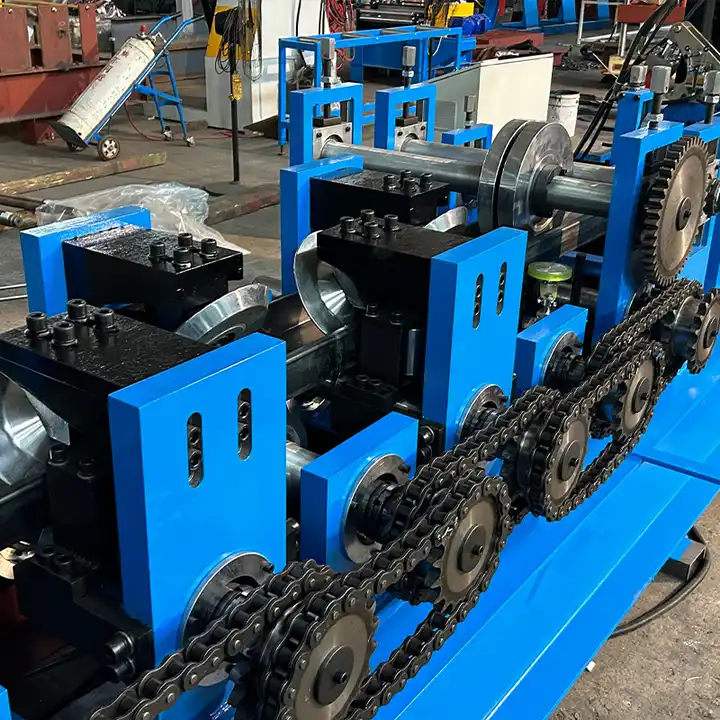
Çelik Sac Panel Çeşitleri
Çelik sac panelleri seçerken, mevcut farklı türleri ve onları benzersiz kılan şeyleri anlamak çok önemlidir. Aşağıda en yaygın çelik sac panel türlerinin bir dökümü yer almaktadır.
Yaygın Çelik Sac Panel Tipleri
| Çelik Sac Tipi | Açıklama | Temel Özellikler |
|---|---|---|
| Galvanizli Çelik Levhalar | Paslanmayı önlemek için bir çinko tabakası ile kaplanmıştır. Neme karşı direncin gerekli olduğu dış mekan kullanımı için idealdir. | Korozyona dayanıklı, uzun ömürlü ve uygun maliyetli |
| Oluklu Çelik Paneller | Genellikle çatı veya dış cephe kaplaması için kullanılan dalgalı desenli levhalar. Tasarım ek güç ve sağlamlık sağlar. | Güçlü, hafif ve kurulumu kolay |
| Paslanmaz Çelik Levhalar | Krom içeren çelik alaşımlarından üretilen bu levhalar, özellikle zorlu ortamlarda gelişmiş korozyon direnci sunar. | Yüksek dayanıklılık, korozyona dirençli ve estetik açıdan hoş |
| Alüminize Çelik Paneller | Alüminyum-silikon alaşımı ile kaplanmış çelik levhalar. Bu paneller mükemmel ısı direnci sağlar ve genellikle otomotiv ve endüstriyel uygulamalarda kullanılır. | Isıya dayanıklı, hafif ve uzun ömürlü |
| Soğuk Haddelenmiş Çelik Levhalar | Pürüzsüz yüzeyler ve hassas boyutlar için soğuk haddelenmiş bu levhalar, doğru şekillendirme ve şekillendirilebilirlik gerektiren üst düzey uygulamalarda kullanılır. | Pürüzsüz yüzey, hassas şekillendirme ve bükme için harika |
| Sıcak Haddelenmiş Çelik Paneller | Isıtma ve haddeleme yoluyla oluşturulan bu levhalar daha yumuşak ve ekonomiktir. Hassas finisajın çok önemli olmadığı yapısal uygulamalar için kullanılır. | Uygun fiyatlı, şekillendirilebilir ve büyük ölçekli uygulamalar için ideal |
| Elektro-Galvanize Çelik | Bu levhalar, düzgün çinko kaplama sağlamak için bir elektrokaplama işleminden geçer. Genellikle beyaz eşya ve otomotiv parçalarında kullanılırlar. | Düzgün kaplama, korozyona dayanıklı ve görsel olarak çekici |
| Delikli Çelik Levhalar | Havalandırma, filtreleme veya dekoratif amaçlar için üzerlerine delikler açılmış levhalar. Mimari tasarımlarda ve endüstriyel ortamlarda yaygın olarak kullanılır. | Hava akışı, özelleştirilebilir desenler ve çok yönlü uygulamalar |
| Renkli Kaplamalı Çelik Paneller | Estetik çekicilik için çeşitli renklerde boyanmış veya kaplanmış çelik saclar. Genellikle görsel çekiciliğin işlevsellik kadar önemli olduğu mimari projelerde kullanılır. | Estetik çekicilik, korozyona dayanıklı ve özelleştirilebilir |
| Weathering Çelik Levhalar | Corten çeliği olarak da bilinen bu paneller zamanla pas benzeri bir patine geliştirir ve bu da onları daha fazla korozyondan korur. Dış mekan uygulamalarında yaygındır. | Kendi kendini iyileştiren pas patinası, az bakım gerektirir ve hava koşullarına dayanıklıdır |
Bu çelik sac türlerinin her biri farklı avantajlar ve dezavantajlar sunar, bu da projenizin çevre, bütçe ve tasarım gereksinimleri gibi özel ihtiyaçlarına bağlı olarak doğru olanı seçmeyi kritik hale getirir.
Oluklu Çelik Sac Paneller Kılavuzu
Oluklu çelik sac paneller, güç katan ve onları çatı kaplama, dış cephe kaplaması ve hatta belirli yapısal amaçlar için ideal kılan dalgalı şekilleri nedeniyle öne çıkar. Oluklu tasarımları, malzemeyi hafif ve kurulumu kolay tutarken sertliği artırır.
Oluklu Çelik Levhaların Avantajları
- Artırılmış Güç: Oluk açma işlemi, ağırlığı panel boyunca daha eşit dağıtarak çeliği daha güçlü hale getirir.
- Hava Koşullarına Dayanıklılık: Bu saclar genellikle galvanizli veya boyalı olarak gelir, bu da şiddetli rüzgarlar ve şiddetli yağmur dahil olmak üzere zorlu dış ortamlara dayanmalarına yardımcı olur.
- Maliyet Verimliliği: Fayans veya asfalt zona gibi diğer malzemelerle karşılaştırıldığında, oluklu çelik büyük ölçekli uygulamalar için nispeten ekonomiktir.
- Kurulum Kolaylığı: Hafifliği ve esnekliği sayesinde oluklu çelik panellerin kullanımı kolaydır, kurulum süresini ve işçilik maliyetlerini azaltır.
Çalışma Süreci Çelik Sac Paneller
Çelik sac panellerin üretim süreci, ham metalden başlayarak inşaatta kullanılan nihai ürüne kadar birkaç adımdan oluşur. Aşağıdaki adımlar genel süreci özetlemektedir:
1. Hammadde Seçimi
Çelik sac paneller tipik olarak doğru çelik alaşımının seçilmesiyle başlar. Bu malzemeler genellikle işlenebilirliği için düşük karbonlu çelik veya gelişmiş korozyon direnci için paslanmaz çelik içerir. İstenen özelliklere bağlı olarak krom, çinko veya alüminyum gibi çeşitli katkı maddeleri kullanılabilir.
2. Metal Tozu Oluşturma
Metal tozları genellikle galvanizleme gibi özel kaplamalar için kullanılır. Bu tozlar, metallerin ince parçacıklar halinde öğütülmesiyle elde edilir ve daha sonra korozyon direncini artırmak veya ısı direnci sağlamak için çelik sacın yüzeyine uygulanabilir.
3. Haddeleme ve Şekillendirme
Ham çelik yüksek bir sıcaklığa kadar ısıtılır ve istenen kalınlığı elde etmek için haddehanelerden geçirilir. Bu işlem sıcak (işlenebilirlik için) veya soğuk (hassasiyet için) yapılabilir.
4. Ondülasyon ve Şekillendirme
Oluklu paneller oluşturmak için yassı çelik sac, özel makineler kullanılarak dalgalı desenler halinde preslenir. Bu şekillendirme güç ve sertlik katarak levhayı çatı ve dış cephe kaplaması gibi yapısal kullanımlar için uygun hale getirir.
5. Kaplama ve Son İşlem
Paneller oluşturulduktan sonra, galvanizleme veya boyama gibi ek kaplamalar uygulanır. Bu kaplamalar çeliğin korozyona, hava koşullarına ve zaman içinde aşınmaya karşı direncini artırır.
6. Kalite Denetimi
Paneller sevk edilmeden önce, gerekli kalınlık, mukavemet ve bitiş özelliklerini karşıladıklarından emin olmak için sıkı kalite denetimlerinden geçer. Kalite kontrollerini geçemeyen paneller geri dönüştürülür veya yeniden işlenir.
Çelik Sac Panellerin Temel Bileşenleri ve İşlevleri
Çelik sac paneller, inşaat ve imalat uygulamalarındaki performanslarını belirleyen çeşitli temel bileşenlerden oluşur. Her bir bileşenin işlevini anlamak, projeniz için doğru çelik panel türünü seçmenize yardımcı olabilir.
Temel Bileşenler ve İşlevleri
| Bileşen | Fonksiyon |
|---|---|
| Çelik Alaşım | Ana malzemenin mukavemetini, esnekliğini ve dayanıklılığını sağlar. Alaşım bileşimi (karbon, krom, vb.) bu özellikleri etkiler. |
| Çinko/Alüminyum Kaplama | Galvanizli veya alüminize panellerde pas ve korozyonu önleyerek dış ortam koşullarında sacın ömrünü uzatır. |
| Krom Katkısı | Özellikle zorlu ortamlarda korozyon direnci için paslanmaz çelik panellerde kullanılır. |
| Oluklar | Levhanın ağırlığını artırmadan yapısal sağlamlık ve güç katar, çatı ve dış cephe kaplamaları için idealdir. |
| Boya Kaplama | Hem estetik çekicilik hem de hava koşullarına ve aşınmaya karşı ek koruma sağlar. |
| Perforasyonlar | Delikli levhalarda havalandırma, filtreleme veya dekoratif kullanım için delikler eklenir. |
-
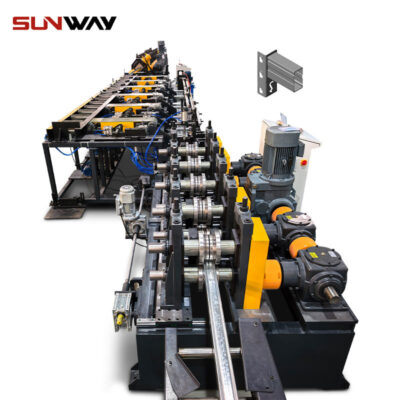 Storage Rack Shelf Box Panel Making Machine Steel Storage Rack System Box Beam Roll Forming Line
Storage Rack Shelf Box Panel Making Machine Steel Storage Rack System Box Beam Roll Forming Line -
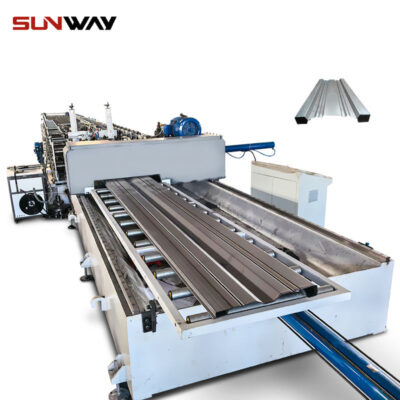 Taşıma Panosu Rulo Şekillendirme Makinesi
Taşıma Panosu Rulo Şekillendirme Makinesi -
 Otoyol Otokorkuluk Uç Terminali Şekillendirme Makinesi
Otoyol Otokorkuluk Uç Terminali Şekillendirme Makinesi -
 Otoyol U/C Post Rulo Şekillendirme Makinesi
Otoyol U/C Post Rulo Şekillendirme Makinesi -
 2 Dalga Otoyol Otokorkuluk Rulo Şekillendirme Makinesi
2 Dalga Otoyol Otokorkuluk Rulo Şekillendirme Makinesi -
 3 Dalga Otoyol Otokorkuluk Rulo Şekillendirme Makinesi
3 Dalga Otoyol Otokorkuluk Rulo Şekillendirme Makinesi -
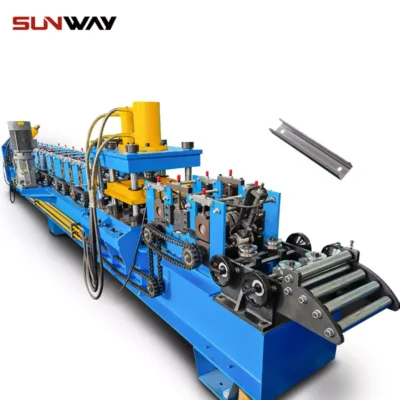 C Bölüm Bracing Omega Depolama Rafı Dik Post Rulo Şekillendirme Makinesi
C Bölüm Bracing Omega Depolama Rafı Dik Post Rulo Şekillendirme Makinesi -
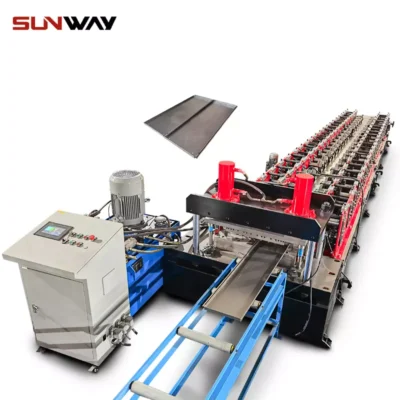 Çelik Kutu Plaka Yapma Rulo Şekillendirme Makinesi
Çelik Kutu Plaka Yapma Rulo Şekillendirme Makinesi -
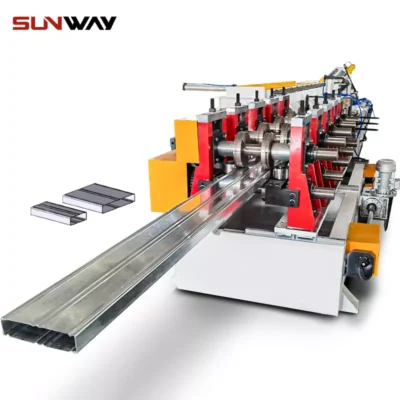 Raf Kolonu İçin Kutu Kiriş Çelik Rulo Şekillendirme Makinesi
Raf Kolonu İçin Kutu Kiriş Çelik Rulo Şekillendirme Makinesi
Çelik Sac Panel Üretiminde Makine Hızı ve Verimliliği
Çelik sac panellerin üretim verimliliği, malzemenin işlenebileceği hız ve doğruluk da dahil olmak üzere kullanılan makinelere bağlıdır. İşte makine hızlarını ve üretim verimliliğini gösteren ayrıntılı bir tablo.
Makine Hızı ve Verimliliği
| Makine Tipi | Hız (m/dak) | Verimlilik (Saat Başına Yaprak) | En Uygun Olanlar |
|---|---|---|---|
| Oluklu Mukavva Makinesi | 20-60 m/dak | 1000 sayfa/saat | Oluklu panel üretimi |
| Soğuk Haddehane | 10-30 m/dak | 500-800 sayfa/saat | Yüksek hassasiyetli soğuk haddelenmiş çelik saclar |
| Sıcak Haddehane | 60-100 m/dak | 1200 sayfa/saat | Dövülebilir sıcak haddelenmiş sacların yüksek hızda üretimi |
| Kaplama Makinesi (Galvanizleme) | 5-15 m/dak | 400-600 sayfa/saat | Çinko/alüminyum kaplama uygulaması |
| Perforasyon Makinesi | 15-40 m/dak | 700-900 sayfa/saat | Delikli çelik sacların oluşturulması |
Makine tipi ve hızı, üretim verimliliğini, maliyeti ve çelik sac panellerin nihai kalitesini etkileyecektir.
için Özelleştirilmiş Mekanik Parametreler Çelik Sac Paneller
Çelik sac panellerin özelleştirilmesi, belirli mekanik parametrelerin uygulamaya uyacak şekilde ayarlanmasını gerektirir. Aşağıdaki tabloda çeşitli özelleştirilebilir parametreler ve bunların önemi özetlenmektedir.
Özelleştirilmiş Mekanik Parametreler
| Parametre | Açıklama |
|---|---|
| Kalınlık (mm) | Daha kalın levhalar daha fazla güç ve dayanıklılık sunar, ancak daha ağırdır ve montajı daha zordur. |
| Uzunluk (m) | Özel uzunluklar, belirli projelerde hassas montaja olanak tanıyarak israfı ve kurulum süresini azaltır. |
| Genişlik (m) | Daha geniş paneller, daha az dikişle daha fazla alanı kaplayarak çatı uygulamalarında sızıntı riskini azaltır. |
| Kaplama Kalınlığı (µm) | Çinko, alüminyum veya boya kaplamanın kalınlığı korozyon direncini ve panelin uzun ömürlülüğünü etkiler. |
| Oluk Derinliği (mm) | Daha derin oluklar mukavemet katar ancak panelin görsel tasarımını ve genel esnekliğini etkileyebilir. |
| Perforasyon Boyutu (mm) | Delikli saclarda, deliklerin boyutu ve deseni havalandırma veya dekoratif amaçlar için özelleştirilebilir. |
Çelik Sac Panel Uygulamaları
Çelik sac paneller, inşaattan imalata kadar çok çeşitli sektörlerde kullanılmaktadır. Aşağıda bazı yaygın uygulamaları özetleyen bir tablo bulunmaktadır.
Uygulamalar ve Kullanım Alanları
| Uygulama | Açıklama |
|---|---|
| Çatı ve Cephe Kaplamaları | Çelik paneller, mukavemetleri, hava koşullarına dayanıklılıkları ve düşük bakım gereksinimleri nedeniyle genellikle çatı ve cephe kaplamalarında kullanılır. |
| Otomotiv Endüstrisi | Yüksek mukavemetli çelik paneller, otomotiv üretiminde araç gövde panelleri, şasi parçaları ve diğer yapısal bileşenler için kullanılır. |
| Endüstriyel Ekipmanlar | Çelik saclar, muhafazalar, muhafazalar ve güç ve hassasiyet gerektiren diğer bileşenler dahil olmak üzere makine parçaları yapmak için kullanılır. |
| Mimari Projeler | Delikli ve renkli kaplamalı çelik saclar, estetik çekicilikleri ve yapısal işlevsellikleri nedeniyle mimari tasarımlarda popülerdir. |
| Tarımsal Yapılar | Oluklu çelik paneller, tarımsal ortamlarda ahır, baraka ve depolama binalarının yapımında yaygın olarak kullanılmaktadır. |
| HVAC Sistemleri | Delikli çelik saclar HVAC sistemlerinde hava filtrasyonu, kanal ve havalandırma amacıyla kullanılır. |
| Deniz Ortamları | Hava koşullarına dayanıklı çelik veya paslanmaz çelik saclar, sert ve tuzlu ortamlara dayanma kabiliyetleri nedeniyle denizcilik uygulamalarında kullanılır. |
| Beyaz Eşya ve Elektronik | Elektro-galvanizli çelik saclar genellikle buzdolabı, çamaşır makinesi ve elektronik cihaz muhafazaları gibi cihazların yapımında kullanılır. |
Çelik Sac Panellerin Kurulumu, İşletimi ve Bakımı
Çelik sac paneller, uzun ömürlülük ve optimum performans sağlamak için uygun kurulum, çalıştırma ve bakım gerektirir. Aşağıda her bir husus için yönergeler yer almaktadır.
Kurulum, İşletim ve Bakım
| Aspect | Kılavuz İlkeler |
|---|---|
| Kurulum | Sızıntıları ve yapısal zayıflıkları önlemek için uygun hizalama, aralık ve güvenli sabitleme sağlayın. Panelleri kesmek ve takmak için uygun aletleri kullanın. |
| Operasyon | Paneller kurulduktan sonra çok az operasyonel gözetim gerektirir, ancak aşınma veya hasar belirtilerine karşı düzenli kontroller önerilir. |
| Bakım | Kalıntıları ve kiri temizlemek için panelleri periyodik olarak temizleyin. Galvanizli veya kaplamalı panellerde pas veya korozyon olup olmadığını kontrol edin ve gerekirse onarın. |
Çelik Sac Panel Tedarikçileri ve Fiyat Aralığı
Doğru tedarikçiyi seçmek, makul bir fiyata yüksek kaliteli çelik sac paneller elde etmek için kritik öneme sahiptir. İşte birkaç tedarikçiyi ve fiyat aralıklarını gösteren bir tablo.
Tedarikçiler ve Fiyat Aralığı
| Tedarikçi | Konum | Fiyat Aralığı (metrekare başına) | Sunulan Ürünler |
|---|---|---|---|
| BlueScope Çelik | Avustralya | $5 – $15 | Galvanizli, renkli kaplamalı ve oluklu çelik paneller |
| Tata Çelik | Hindistan | $4 – $12 | Oluklu, alüminize ve soğuk haddelenmiş çelik saclar |
| ArcelorMittal | Küresel | $6 – $18 | Paslanmaz çelik, yaşlandırma çeliği ve delikli çelik saclar |
| POSCO | Güney Kore | $7 – $20 | Sıcak haddelenmiş, soğuk haddelenmiş ve renkli kaplanmış çelik saclar |
| Nippon Çelik Şirketi | Japonya | $8 – $22 | Yüksek mukavemetli çelik, paslanmaz çelik ve elektro-galvanizli saclar |
Doğru Çelik Sac Panel Tedarikçisi Nasıl Seçilir
Bir tedarikçi seçmek fiyatlandırma, ürün kalitesi ve tedarikçinin itibarı gibi çeşitli faktörleri içerir. İşte bir çelik sac panel tedarikçisi seçerken nelere dikkat etmeniz gerektiğine dair bir kılavuz:
Doğru Tedarikçiyi Seçmek
| Kriterler | Açıklama |
|---|---|
| Ürün Kalitesi | Çelik kalitesini, kaplamaları ve son işlem seçeneklerini kontrol edin. Tedarikçinin kalite standartlarına bağlılığını teyit eden ISO 9001 gibi sertifikaları arayın. |
| Fiyatlandırma | Fiyatları birden fazla tedarikçi arasında karşılaştırın ancak düşük fiyatların kaliteden ödün vermediğinden emin olun. Büyük miktarlarda alım yapıyorsanız toplu indirimlere bakın. |
| Teslim Süresi ve Kullanılabilirlik | Tedarikçinin proje zaman çizelgelerinizi karşılayabildiğinden ve yeterli stok seviyesine sahip olduğundan emin olun. Teslimattaki gecikmeler projeleri raydan çıkarabilir. |
| Müşteri Desteği | Güvenilir bir tedarikçi iyi bir müşteri hizmeti, teknik destek ve satış sonrası yardım sunarak kurulum, özelleştirme ve bakım konularında size yardımcı olur. |
| Sürdürülebilirlik Uygulamaları | Çevresel sorumluluk projeniz için önemliyse, geri dönüşüm ve emisyonların en aza indirilmesi de dahil olmak üzere sürdürülebilir üretim yapan tedarikçileri tercih edin. |
Çelik Sac Panellerin Avantajları ve Sınırlamaları
Çelik sac paneller çok sayıda avantaj sunarken, belirli sınırlamalar da getirmektedir. İşte avantaj ve dezavantajları vurgulayan bir karşılaştırma tablosu.
Çelik Sac Panellerin Avantajları ve Sınırlamaları
| Avantajlar | Sınırlamalar |
|---|---|
| Dayanıklılık | Dolu veya ağır darbeler gibi aşırı koşullar altında göçmeye yatkın |
| Korozyon Direnci (kaplamalarla) | Kaplamalar çizilir veya hasar görürse korozyona uğrayabilir |
| Hafif ve Güçlü | Uygun şekilde yalıtılmamışsa şiddetli yağmur veya dolu sırasında gürültülü olabilir |
| Tasarım ve Özelleştirmede Çok Yönlülük | Taşıma veya yanlış sabitleme sırasında hasarı önlemek için profesyonel kurulum gerektirir |
| Yangın Dayanımı | Isı iletkenliği, yüksek sıcaklıktaki ortamlarda sorun olabilir ve uygun yalıtım gerektirir |
| Düşük Bakım | Asfalt şıngıl gibi geleneksel malzemelere kıyasla daha yüksek başlangıç maliyeti |
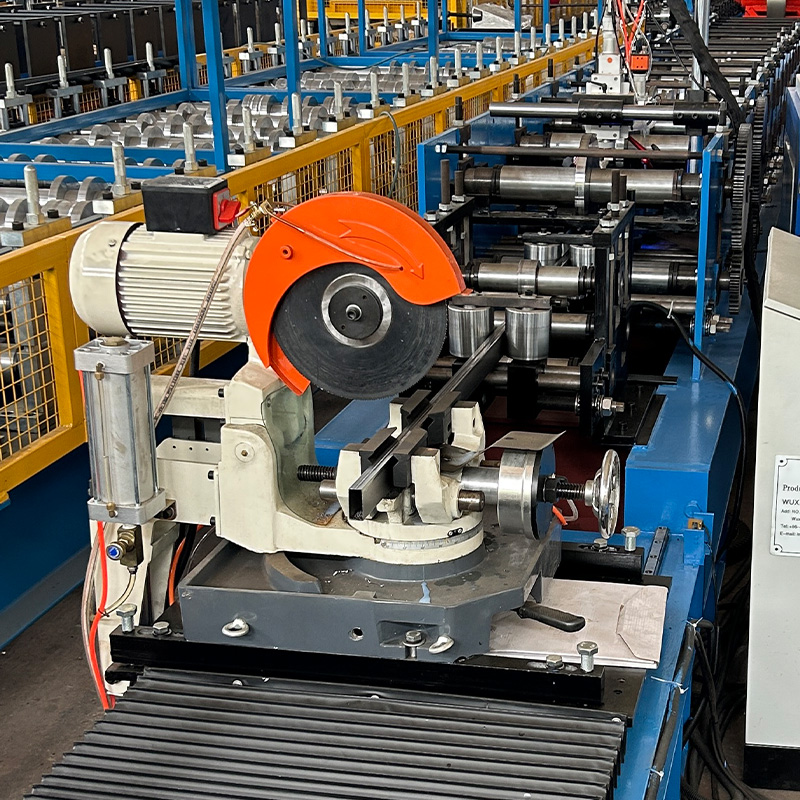
SSS
| Soru | Cevap |
|---|---|
| Çelik sac panellerin kullanım ömrü ne kadardır? | Çelik sac paneller, kaplama türüne, çevresel faktörlere ve uygun bakıma bağlı olarak 40 ila 70 yıl arasında dayanabilir. |
| Çelik sac paneller çevre dostu mudur? | Evet, çelik paneller geri dönüştürülebilir ve birçok üretici, üretimde geri dönüştürülmüş çelik kullanımı da dahil olmak üzere çevre dostu uygulamalar kullanır. |
| Çelik sac paneller boyanabilir mi? | Evet, çelik paneller üretim sırasında renkle kaplanabilir veya estetik tercihlere uyması için daha sonra boyanabilir. |
| Çelik sac panellerde paslanmayı nasıl önleyebilirim? | Galvanizli veya kaplamalı panellerin kullanılması ve çiziklerin temizlenmesi ve onarılması gibi uygun bakımın sağlanması paslanmanın önlenmesine yardımcı olabilir. |
| Çelik sac paneller yalıtım için iyi midir? | Çelik kendi başına iyi bir yalıtkan değildir, ancak panellerin altına uygun yalıtım eklemek ısı ve ses yalıtım özelliklerini iyileştirebilir. |
| Çelik sac panellerin maliyeti nedir? | Fiyatlar değişmekle birlikte, çeliğin türüne, kalınlığına ve herhangi bir ek kaplama veya işleme bağlı olarak tipik olarak metrekare başına $4 ila $22 arasında değişir. |
| Çelik sac paneller kıyı bölgelerinde kullanılabilir mi? | Evet, ancak tuzlu, aşındırıcı deniz ortamına dayanması için paslanmaz çelik veya hava koşullarına dayanıklı çelik gibi özel kaplamalı paneller kullanılması önerilir. |
Sonuç
Çelik sac paneller inşaattan endüstriyel kullanımlara kadar geniş bir uygulama yelpazesi için inanılmaz derecede çok yönlü ve dayanıklı bir çözümdür. Çeşitli tipleri, kaplamaları ve özelleştirme seçenekleri ile hem işlevsellik hem de estetik çekicilik sunarlar. İster uygun maliyetli çatı kaplama malzemeleri ister üst düzey mimari çözümler arıyor olun, çelik sac panellerin türlerini, üretim süreçlerini ve performans özelliklerini anlamak, projeniz için bilinçli bir karar vermenize yardımcı olacaktır.
